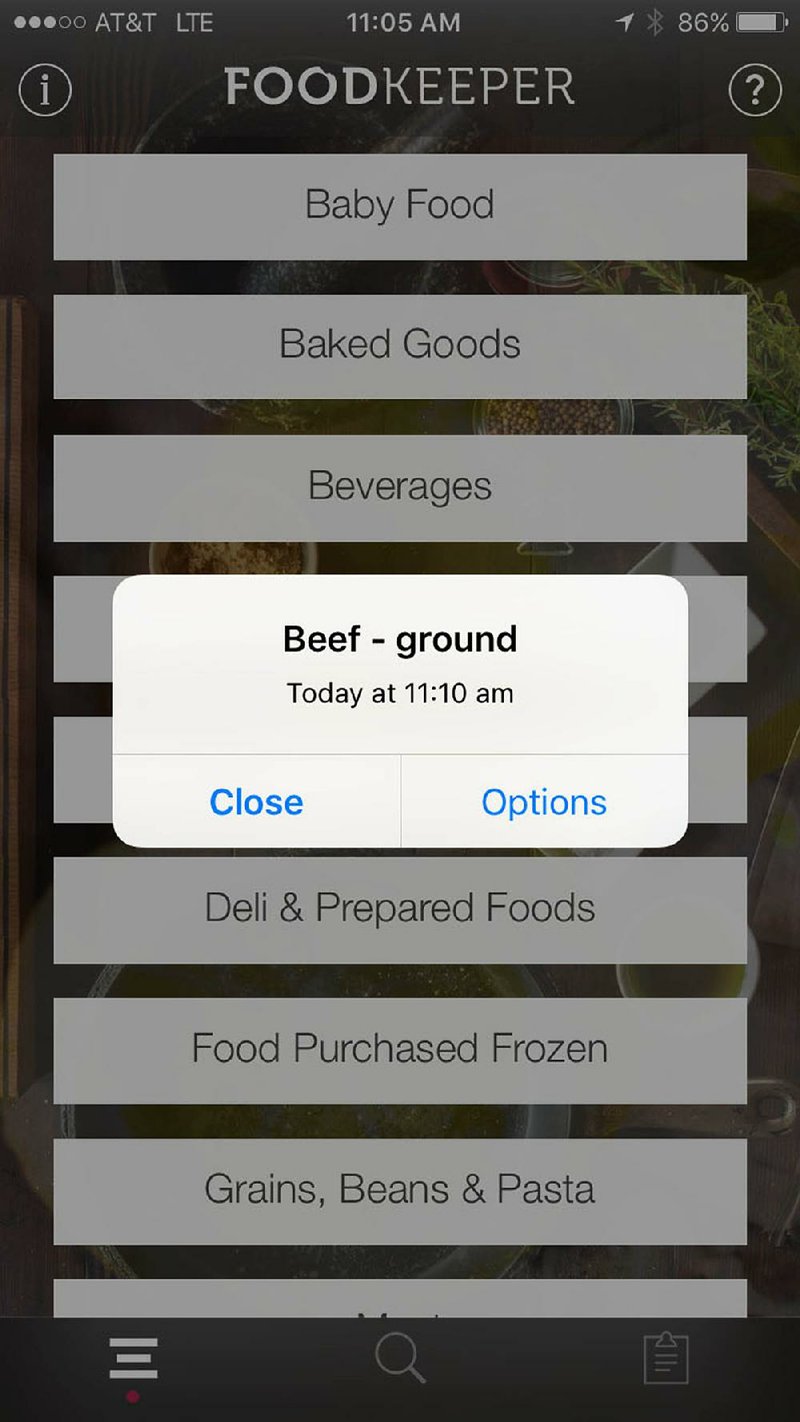I've written before about my ongoing quest to avoid wasting food -- planning meals that use the same or similar ingredients in an effort to use up every last bit, and finding ways to transform leftovers into new dishes. Estimates vary, but according to statistics from the United States Department of Agriculture between 30 percent and 40 percent of the food grown or harvested in the United States is thrown out. Some of that happens at the farm and quite a bit happens at the grocery store, but consumers are responsible too. On average, we throw out as much as a quarter of the food we buy.
Now I have a new tool in my arsenal.
The FoodKeeper app.
FoodKeeper was developed by the USDA's Food Safety and Inspection Service, along with Cornell University and the Food Marketing Institute. FoodKeeper was originally published as a pamphlet in 1985. The app version was released last year.
The app is designed to help consumers avoid throwing away food and prevent food borne illness. It includes information about peak freshness, storage and safety for a variety of foods, fresh and prepared. The entries for each food include how long the food will stay fresh under specific conditions.
Whole wheat flour, for example, will stay fresh for 3 to 6 months stored in the pantry or 6 to 8 months in the refrigerator. Prepared horseradish will keep unopened in the pantry for one year, or 3 to 4 months if refrigerated after opening.
I frequently refer to the website stilltasty.com to find out the average life span of leftovers. And while that site is often reliable and features a larger database of foods, it doesn't help me remember to eat the leftovers before they suffer in quality or, worse, safety.
FoodKeeper features an "add to calendar" option that links with the user's calendar app to send an alert when it's time to eat or toss the food. I found this to be especially helpful for items that got pushed out of sight in the refrigerator.
I also really like that the app uses the purchase date in most cases rather than the "sell by," "use by" and "best by" dates as the starting point. (Those dates are not regulated and are essentially meaningless in terms of freshness and safety.) Exceptions include sour cream, cookie dough, refrigerated pie crusts and biscuit dough. The app defers to the date listed on the package for those items.
The app acknowledges that the times are merely suggestions, and
some foods will keep longer while others may deteriorate before the specified time has passed.
And there are some items I would happily eat or use well past the app's recommended range, such as buttermilk. The app recommends consuming buttermilk within 2 weeks of purchase. And I've used fresh cauliflower well after the app's recommended 3 to 5 days.
One recommendation I take exception to is for coffee. An open container of whole-bean coffee will not stay fresh for 3 to 5 months in the pantry. And an open container of ground coffee will not stay fresh 3 to 5 weeks. All coffee -- whether whole bean or ground -- should be used with 7 days of opening for optimum flavor and freshness. After this time, the natural oils in the coffee will break down and turn rancid.
But for the most part, I agree with and trust the app's suggestions.
Unfortunately, the app does not include recommendations for homemade versions of such foods as cakes and cookies, mayonnaise, barbecue sauce, jams and jellies. Nor does it include grains beyond rice and pasta. But users can request foods be added, as I did with quinoa and barley.
In addition to letting consumers know how long foods are good to eat, the app includes basic cooking instructions or food safety guidelines for meats, poultry and seafood.
The app also provides detailed information about storing foods safely, including what to do in the event of a prolonged power outage, as well as shopping tips for keeping food fresh and safe in the store and on the way home. (Get shelf-stable items -- those in boxes or cans -- first; refrigerated and frozen items just before checking out.)
The free app is available for Apple and Android mobile devices. Those without a mobile device can access FoodKeeper on a desktop computer at foodsafety.gov/keep/foodkeeperapp/index.html
Food on 04/27/2016
